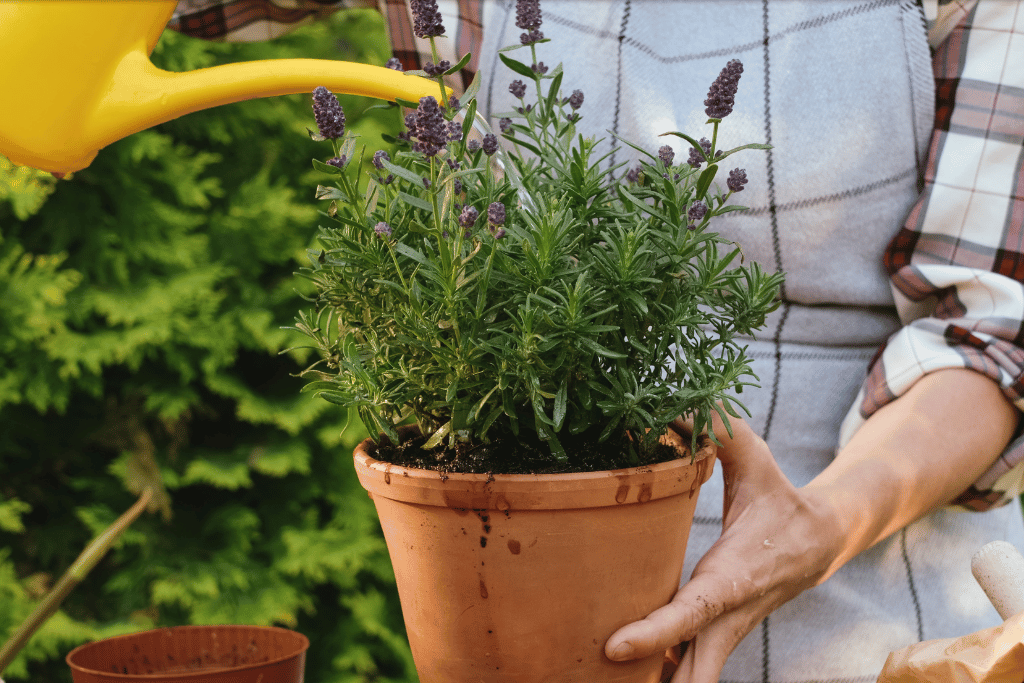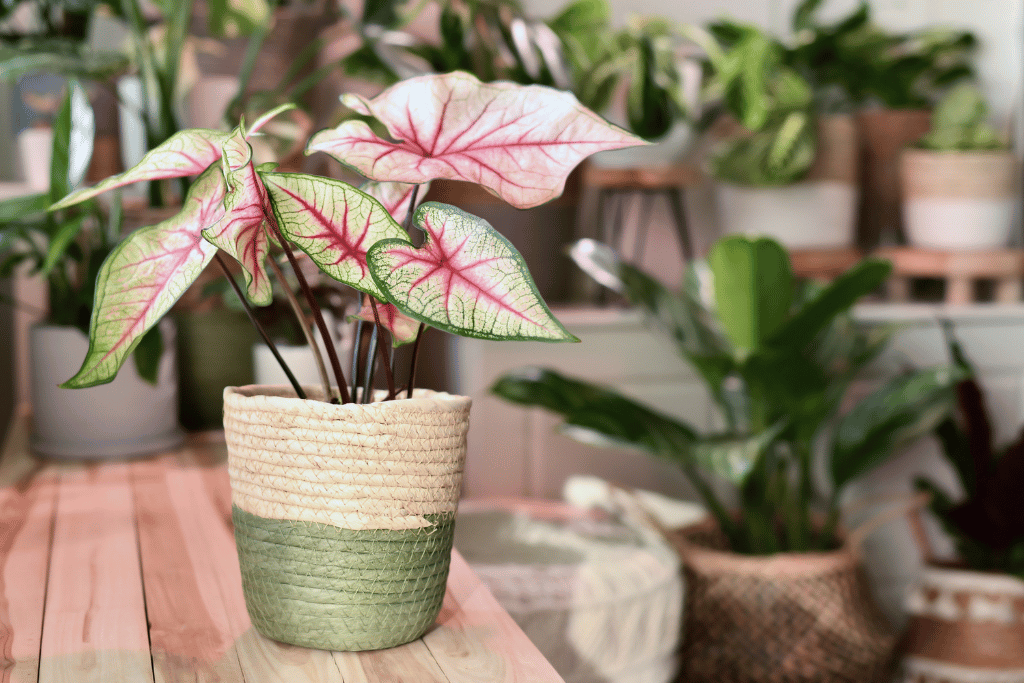
If you’re looking to bring a tropical flair and exotic ambiance to your home, angel plants might just be your best bet.
The angel plant is one of the most eye-catching houseplants, with its vibrant colors, lush foliage, and dainty blooms.
But before you take the plunge in welcoming it into your indoor space, it’s important to understand how to take care of an angel plant properly. Because if you don’t, it can go from vibrant to extremely dull, extremely fast.
The good thing is, you can actually avoid this problem by taking care of your angel plant properly.
In this blog, I will discuss the basics of how do you take care of an angel plant and provide tips to ensure your plant stays healthy and vibrant for years. Read on to learn more!
How to Care for an Angel Plant – Everything You Need to Know
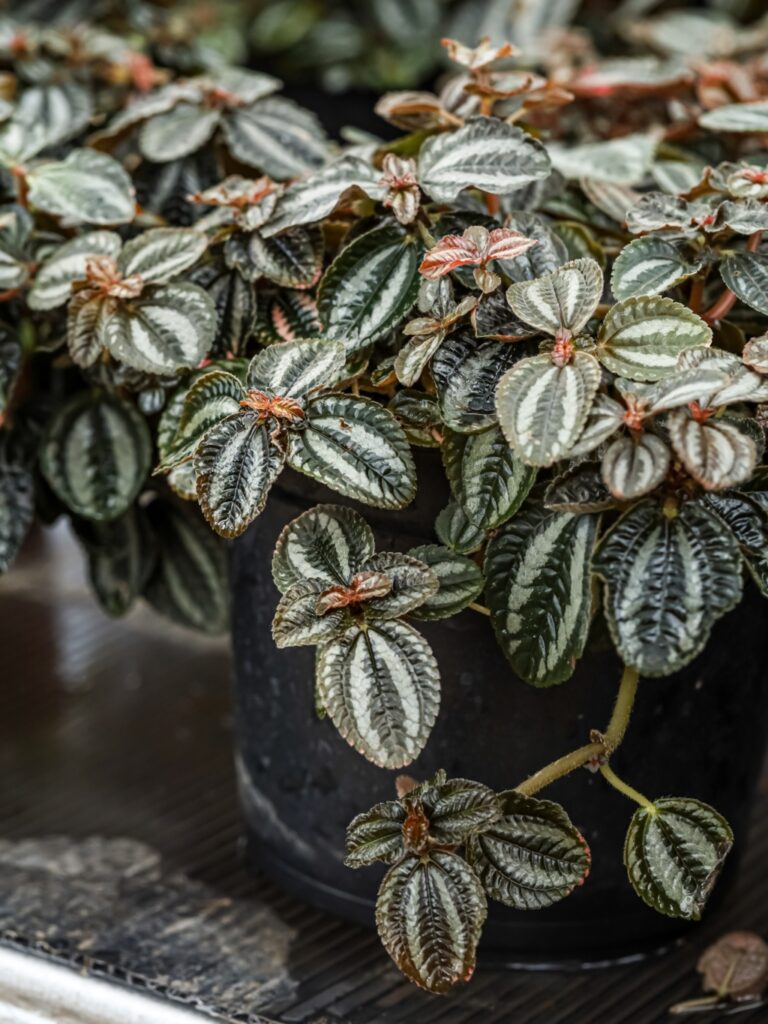
At first, caring for angel plants seems a little high maintenance, but with a little bit of research, you’ll be able to take very good care of your angel plants and make sure they have a long and healthy life.
So let’s go ahead and take a look at some of the key elements that go into taking care of exotic angel plants!
Watering
The first lesson in exotic angel plant care is to always make sure there’s plenty of water available.
The soil should always be kept moist, so you should water when the top inch of the soil feels dry. Never wait longer than that point.
When watering, make sure that the water can penetrate deeply and reach the roots of the plant. If using a watering can or other container, you should water the plant in multiple spots to ensure that the entire area is adequately moistened.
If you don’t do that, you might get some parts that got more water than others, and the overall plant won’t be able to grow properly.
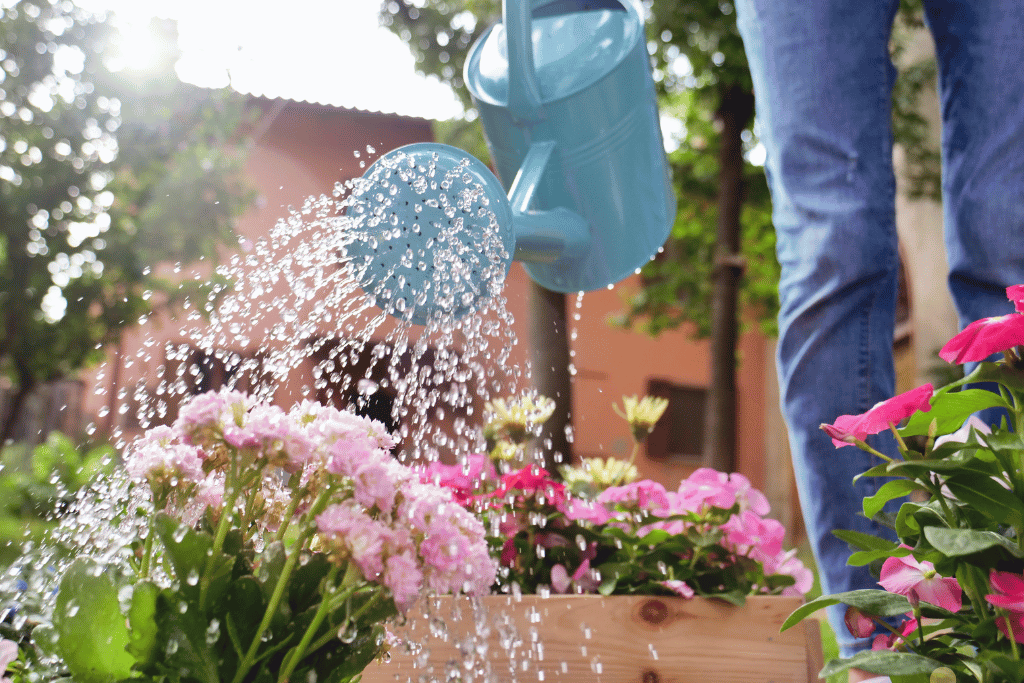
If you live in an area with hot, dry summers, your Exotic Angel Plant will need more frequent watering than usual. You may want to set a regular watering schedule if you can – for example, every second or third day – so that the plant doesn’t become dehydrated or stressed.
You can also check the soil occasionally to make sure it remains moist and replace any water that has been lost to evaporation because of the sun.
If you notice your Exotic Angel Plant wilting, this could mean that it is not getting enough water or is suffering from root rot due to overwatering. Both, we do not want.
In this case, you should carefully assess the soil and make sure that it is not overly soggy before adding more water. Pay attention to your plant’s needs and adjust your watering schedule accordingly.
Even if you’re not using any fancy tools to check for the exact moisture levels, just poking the soil one inch and checking that way would be enough to figure out if it’s dry enough for another watering session!
Light
When it comes to angel plants, light is the key to success for this particular species.
These plants prefer bright, indirect sunlight, and a spot near a south, or west facing window would be ideal.
This way, the plant can still get plenty of sun while also avoiding any harsh direct sunlight that could damage its delicate leaves.
Plus, if you want to add an angel plant to your home, it’s a good idea to choose a spot that receives plenty of bright, filtered light. So that could be right next to a window that gets a lot of sunlight, but the curtain would act as a filter anyway.
Letting only a certain amount of light in!
To provide the best possible environment for your angel plant, make sure to do some research on the species you have added to your home.
This will give you a better understanding of what kind of light conditions it needs and how bright or dim its environment should be in order to thrive.
But even with that, keep an eye out for any signs that might indicate that your angel plant is getting too much or not enough light.
An overall yellowish coloration of its leaves could be a sign that the plant isn’t receiving enough light, while brown spots on the leaves may indicate it is getting too much sun.
Soil
While watering and light are extremely important, the soil requirements for an exotic angel plant are crucial for its health and growth.
You can’t have a healthy plant unless its home is healthy too!
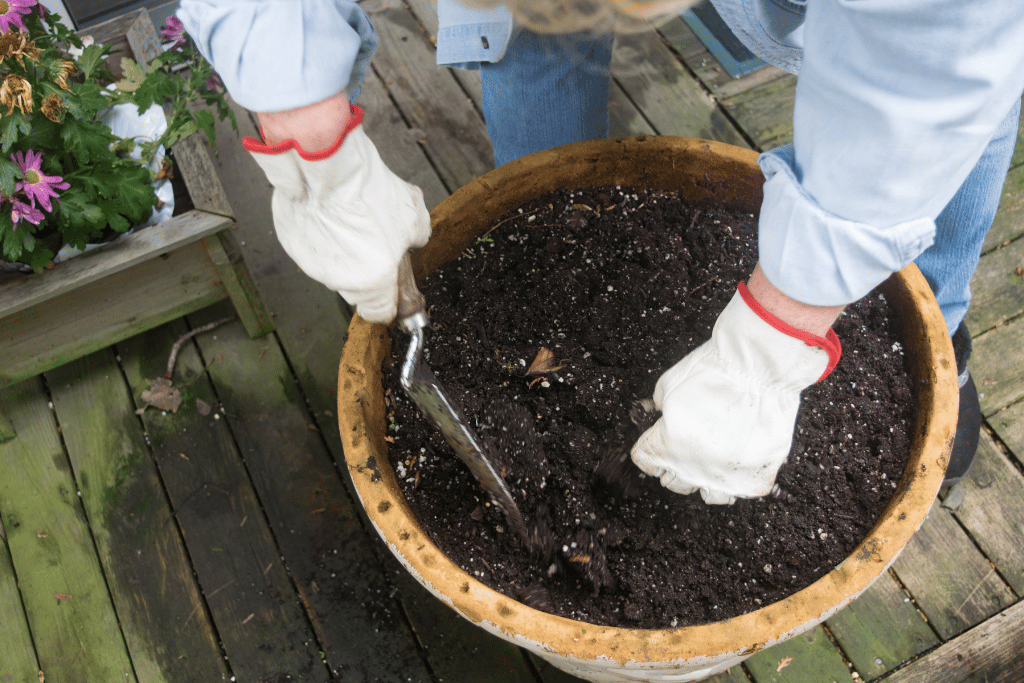
An ideal potting mix for the angel plant should contain one part cocopeat, one part garden soil, two parts perlite, one part orchid bark, and one part potting charcoal to fend off any bugs or root rot.
It is important to use a substrate with good drainage in order to eliminate excess water from the soil.
This is because exotic angel plants need to be kept moist at all times, and by having a substrate with good drainage, will prevent the plant from becoming waterlogged.
It is also important to choose a pot with a large enough drainage hole that allows any excess water to escape, as this will help to keep the soil from becoming soggy and allow for better aeration.
Adding some sand and compost to the soil mix can be beneficial in improving its drainage as well as providing essential nutrients that are required for healthy plant growth.
A mixture of organic matter, such as peat moss or compost, can also be added to the soil in order to maintain its fertility and help provide essential nutrients.
With all of that, adding some slow-release fertilizers or liquid fertilizers can also be beneficial as they will help to maintain a balanced nutrient level over time.
Lastly, it is important to keep the soil pH between 6.0 and 7.0 for the optimal health of your exotic angel plant.
The key to a successful pot of Exotic angel plants is to ensure that you provide the right soil mix, with enough drainage and nutrients for optimal health.
Temperature and Humidity
The exotic angel plant is a tropical plant that loves humid conditions and temperatures between 70-90 degrees Fahrenheit.
It can survive in cooler conditions if they are not too extreme, but its growth may be stunted.
Ideally, the temperature should stay within the range of 60-70 degrees Fahrenheit for the Exotic angel plant to thrive.
For optimal growth and health, humidity levels should also be taken into account when caring for the Exotic angel plant.
High humidity is preferred, as it helps the soil stay moist and prevents the leaves from burning or wilting in extreme heat.
In addition to that, high humidity helps ward off pests and diseases. The ideal humidity level for the Exotic angel plant is around 50-70%.
It’s important to pay attention to the temperature of your home or office when caring for an Exotic angel plant.
If possible, bring in a humidifier to increase humidity levels and use a temperature-regulating fan to help keep temperatures in the ideal range.
You can also move the plant away from any sources of direct heat or cold air, such as open windows, vents, and radiators.
If the temperature starts to dip too low, you can cover it in a light blanket or move it closer to a heat source for some extra warmth, and the toasty plant will be all happy and healthy for years to come!
Fertilizer
Fertilizer is essential for the health and growth of exotic angel plants, so it’s important to provide them with the right type and amount.
Generally, they should be fertilized every two weeks during the growing season (spring and summer).
However, if your plant is in a bright location, such as near a window or in a greenhouse, then it may need to be fertilized more frequently as it can get drier much faster!

The best fertilizer for exotic angel plants is one that contains nitrogen and phosphorus.
Nitrogen helps with the growth of stems and leaves, while phosphorus encourages healthy root growth and flowering.
It’s also important to use a fertilizer specifically designed for houseplants so that you can be sure it contains the right nutrients for your plant.
It’s typically recommended that you use a weaker fertilizer solution and apply it more often rather than using stronger fertilizers less frequently.
This helps avoid burning and over-fertilizing the roots, which can cause damage to the plant. You should also water your exotic angel plant well before applying fertilizer, as it helps the plant absorb nutrients more easily.
When using a liquid fertilizer, you should apply about one teaspoon of solution per gallon of water. Make sure to evenly distribute the fertilizer solution over the soil surface and gently massage it into the top layer so that it absorbs into the root system.
After fertilizing, water your plant thoroughly to wash away any of the excess fertilizer.
It’s important not to over-fertilize or under-fertilize exotic angel plants.
If you’re unsure about how much fertilizer to use, start with a lower amount and adjust as necessary.
It’s also a good idea to give your exotic angel plant a break from fertilizer during the winter months when growth is slower.
Once the weather starts to warm up again, you can resume fertilizing at the recommended rate.
In addition to that, if you notice that your plant is not responding well to fertilizer, it may be a sign that you should take a break from fertilizing for a few weeks.
Doing so can help give the plant time to recover and ensure that it gets the right nutrients it needs.
Pruning
Pruning exotic angel plants is an important part of helping them to stay healthy.
Not only does it encourage new growth and promote a bushier appearance, but it can also help keep the leaves looking vibrant and striking.
It is best to prune your angel plant in early spring before any new growth appears. So your plant is able to keep up with the growth too!
When pruning, start by removing any dead or damaged leaves.
This will help maintain the plant’s health and beauty, as well as make it easier to prune other areas of the plant.
It is also important to cut back leggy stems if you wish to promote more bushier growth in your exotic angel plant.
After you have removed the dead and damaged leaves and trimmed the leggy stems, shape the plant as desired.
Pruning your exotic angel plant does require some effort and discipline, but it will be worth it in the end. By pruning regularly, you can keep your angel plants looking their best, and at their healthiest too!
Propagating Angel Plants at Home

Propagating angel plants is a great way to save money and get more plants for less.
The process is easy enough for beginners to be successful at it, so don’t be intimidated by the idea of propagating your own plants!
There are two ways you can propagate angel plants: stem cuttings or leaf cuttings.
Taking stem cuttings from both young and mature plants is the easiest way to propagate, as long as you take healthy cuttings.
Place each cutting in an appropriate potting mix such as soil, Leca (clay pellets) or water.
Propagating in Soil
Propagating in soil is straightforward and simple.
Before you begin, make sure to use sterilized tools such as scissors or a sharp blade to take the cuttings from the parent plant.
You can take cuttings from both young and mature plants during the growing season. Try to select healthy stems with at least one leaf node that will root easily.
Carefully cut the stem below a leaf node and remove excess leaves for better air circulation. Then plant your cutting into fresh, rich soil and keep it lightly moist (not wet) until you see shoots appearing from the soil.
Propagation through Water
Propagation through water is just as easy but with a quicker turnaround time than propagating in soil.
Take cuttings from the parent plant and place them in a jar or glass of water.
Make sure to keep the pot in a warm spot with indirect light, and wait for the magic to happen! It shouldn’t take too long before you start seeing shoots and roots appearing, at which point you can gently transplant your seedlings into a larger pot or garden.
Propagation with Leca
Leca is another option for propagating angel plants. Leca, or lightweight expanded clay aggregate, is an aerated and free-draining medium that can hold moisture well enough for stem cuttings to root.
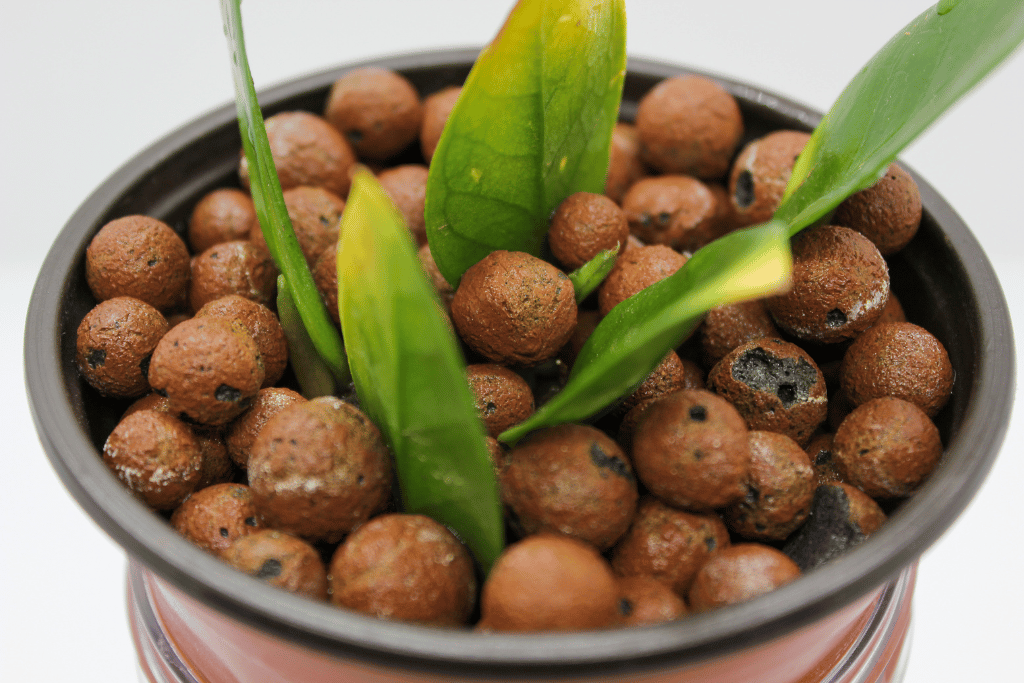
Fill your pot or tray with leca beads, add some water, and place the cuttings in. After a few weeks, the roots should have taken hold, and you can then transplant your new plants into larger pots or gardens.
Overall, propagation is a great way to get more angel plants for less, and it’s an enjoyable process too! Whether you’re propagating through soil, water, or Leca, the steps are easy and straightforward.
With a bit of patience, you’ll be able to have an abundance of angel plants in no time!
Potential Problems with the Angel Plant You Need to Watch Out For

While the above information will help you keep your angel plant super healthy, there is a chance you might fall off the caring wagon sometimes.
The thing is, it’s sometimes hard to really figure out when that is, and by the time it’s super apparent, it’s too late.
That’s why it’s important to keep an eye on the potential problems throughout so if anything is going wrong, you can remedy it before losing the entire plant!
Here are some of the main problems with angel plants you should watch out for:
Fungal Infections
Fungal infections are a super common problem for angel plants and can be identified by dark spots on the leaves.
As soon as these symptoms appear, it is important to isolate the infected plant from other healthy plants to prevent the infection from spreading further.
Fungicides are typically used to treat fungal infections in angel plants. However, in some cases, the infection may be too severe for fungicides to help.
In such cases, other methods must be employed in order to treat the infected plant and restore its health.
For example, it is usually beneficial to remove any affected leaves as soon as possible before further damage can happen.
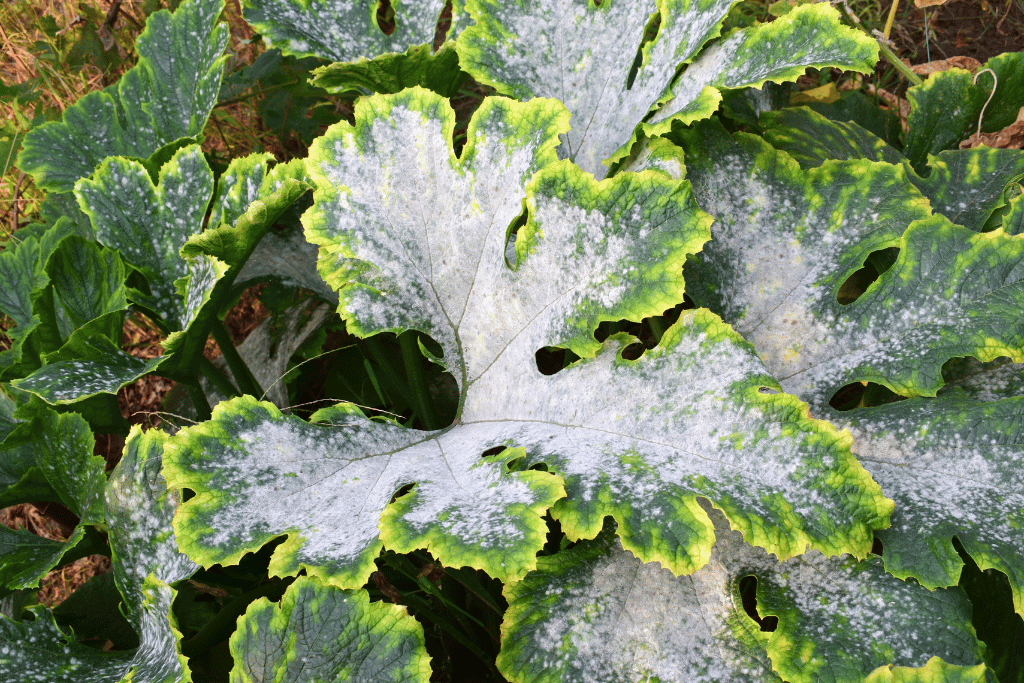
If fungal spores have spread to the soil of the plant, make sure to sterilize the soil before replanting.
Additionally, it is important to ensure that the angel plant is getting adequate sunlight and water to help prevent future infections.
It can be difficult to rid a fungal infection from an angel plant once it has taken hold, so prevention is key.
Make sure not to overcrowd angel plants, as this can create humid conditions and provide a breeding ground for fungus.
Plus, try to avoid over-watering the angel plant and keep it in an appropriately sized container.
With the right care, you can ensure that your angel plant remains healthy and free from any fungal infections.
Root Rot
Root rot is a common problem that can be fatal to your angel plant if left unchecked. It occurs when the roots of the plant become waterlogged and start to break down, leading to wilting and eventual death.
The best way to prevent root rot is to ensure the soil drains well and not overwater your angel plant. Make sure to use soil that is loose and well-aerated, as this encourages drainage and discourages waterlogging.
When watering your angel plant, avoid getting the leaves wet and instead focus on the root area.
If you notice signs of root rot, such as wilting or yellowing of the leaves, you may be able to rescue the plant by replanting it in fresh, well-drained soil.
It’s important to act quickly as root rot can spread rapidly and put your angel plant at risk of dying.
If the root rot is too severe, throwing away the plant may be necessary. Unfortunately, this means that the affected plant will not be able to be saved.
However, if you’ve been propagating your angel plant, you may be able to save some of its cuttings and use them to start a new one!
Unhealthy-Looking Angel Plant
Iron deficiency is one of the most common nutrient deficiencies in angel plants. This can cause the leaves to turn yellow or pale green, and the plant may look unhealthy.
If your angel plant suffers from iron deficiency, there are a few steps you can take to help it get back on track.
First, try giving your angel plant an iron supplement.
This can be found in most gardening stores or online and is a great way to help give your plant the iron it needs. Plus, adding good-quality manure, compost, or natural fertilizers can help your plants find these nutrients from the soil.
When the soil is poor and lacks plant nutrition, you may have to resort to adding supplements to your plant’s diet. It’s a good idea to start with a light feed and gradually increase the intensity or frequency as needed.
Make sure to always read the directions on any fertilizer you buy, as too much can actually be harmful for your plant.
Finally, make sure that your angel plant is getting adequate light and water. Both of these are essential for plant health and can help to make sure that the iron supplement is working properly.
With proper care and attention, your angel plant should soon recover from its iron deficiency in no time!
Discoloration
Yellowing and drying of the leaves, dark purple tips, or other discolorations along the veins and leaf margins are all signs of a magnesium deficiency.
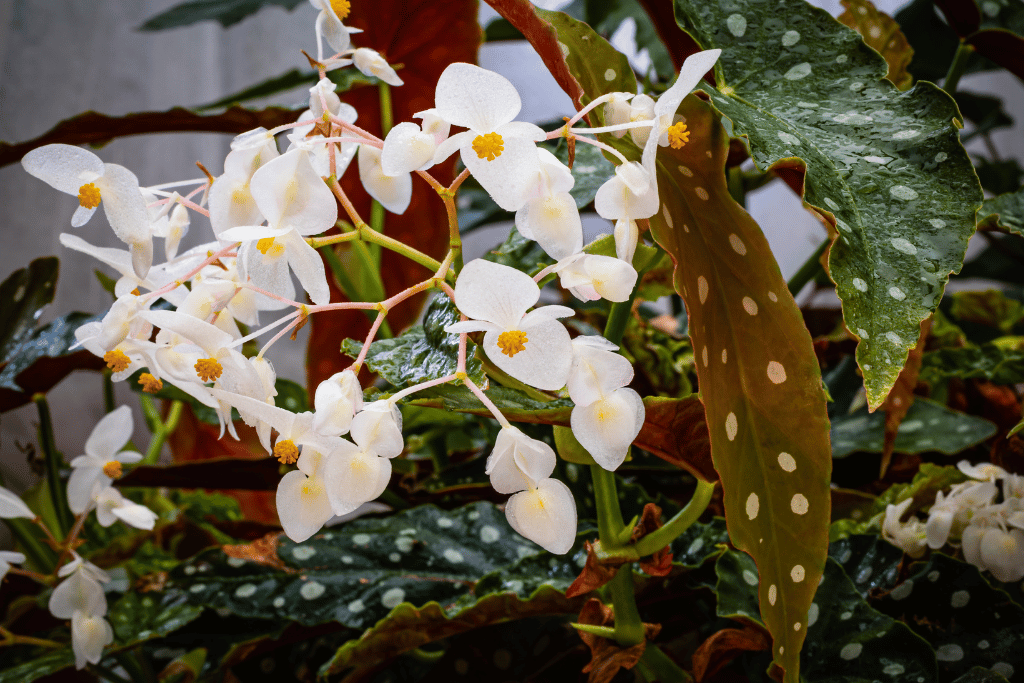
Which is one of the more common mineral deficiencies encountered in plants.
The plant may also produce fewer fruits or flowers than usual, as magnesium is essential for photosynthesis.
Fortunately, you can easily remedy magnesium deficiency with the help of fertilizers or supplements rich in magnesium.
For best results, apply a dose of fertilizer every few weeks to ensure adequate levels of this important mineral remain in the soil. With that, applying Epsom salts directly onto the roots can be an effective way to treat magnesium deficiency in plants.
Another method is to use a foliar spray which contains chelated magnesium. Simply mix the solution with water, then spray it onto the leaves of your plant.
This method is effective in restoring quality health to your plants, but you should use it sparingly as over-application can lead to other problems.
No matter which method you choose, be sure to consult a gardening specialist if you find your plants suffering from magnesium deficiency.
They can help diagnose the problem and provide further advice on how to address it, ensuring that your plant receives the proper amount of nutrients needed for healthy growth.
With their help and a little effort, your plant should soon be back to its normal state. Nice and vibrant, ready to light up any room!
Brown or Black Spots
One of the most confusing problems you might deal with while caring for angel plants is when they develop black or brown spots on the leaves, as well as curled tips of the leaves.
This is a classic sign of a Potassium deficiency.
Deficiencies of this nutrient are caused by several factors such as under-watering, over-fertilizing, or simply not providing enough potassium to the plant.
The best way to treat a potassium deficiency is by giving your exotic angel plant a potassium supplement.
This can be done in several ways, such as increasing the amount of fertilizer that you give your plant or adding a special mulch or soil mix to the planting area.
You may also want to consider shifting your watering habits, as too much water can leach important nutrients from the soil.
Finally, it’s important to remember that exotic angel plants need plenty of sunlight and a well-draining soil in order to stay healthy.
If you keep up with these requirements for your plant, it should be able to easily overcome any potassium deficiency.
It’s also important to monitor your plant for any nutrient deficiencies and take action as soon as possible, in order to prevent further harm from coming to your angel plant.
The Bottom Line
Exotic angel plants are a great way to bring a little tropical paradise into your home. Not only do they look beautiful with their lush foliage, but they require minimal care and effort to thrive.
They’re the perfect pick for busy folks or those who don’t have green thumbs!
These plants need moist soil to stay hydrated and should be watered regularly. While they prefer bright indirect sunlight, they can also survive in lower light conditions.
They require a high level of humidity to stay healthy, so you may need to mist them or put them in a damp spot.
It’s important to note that these plants are still living things that require attention and care. Researching your plant and taking the time to create an ideal environment for it is the key to success. With a little bit of love and dedication, you will see these beautiful plants thrive in no time!



